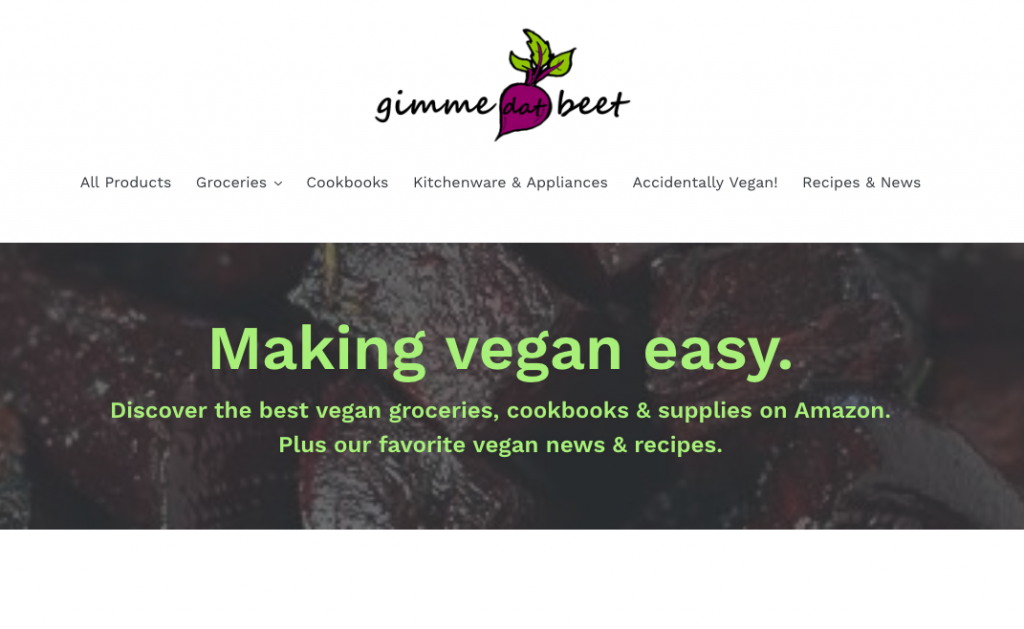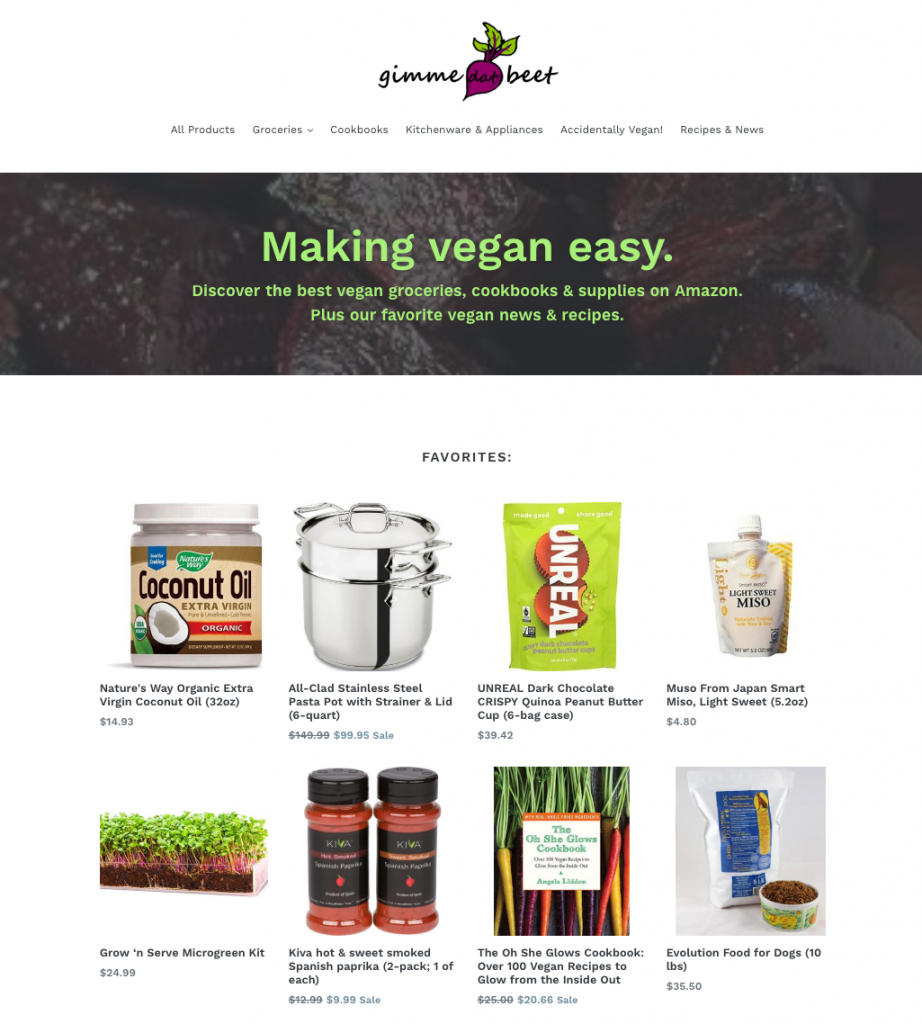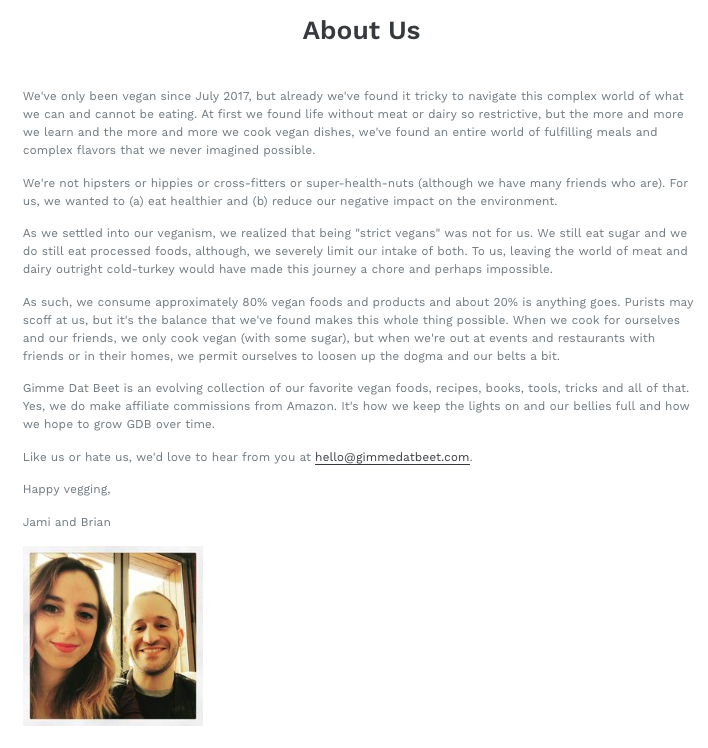
Gimme Dat Beet was a destination for vegan groceries, cookbooks and supplies as well as some favorite vegan recipes.
As a new vegan, I found it extremely challenging to navigate my neighborhood grocery store. Sure, it’s simple to pluck great veggies from the produce section, but what about packaged goods? Are Oreo cookies vegan? (hint: yes!) Is Jack Daniels BBQ sauce? (hint: nope!) What about Pepperidge Farm cinnamon raisin bread? (also nope!)

At the same time, I knew that I wanted to dip my toes into the warm waters of side-hustling. I’d read a bit about the world of Amazon Affiliates, and it’s low barrier for entry, made it an appealing place to start.
Leveraging the super-simple Shopify interface, through a combination of product listings that I’d import from Amazon (via the Spreadr plugin) and recipes with hyperlinked ingredients, I quickly created a simple, yet relatively polished vegan destination site. I assumed that the recipes would be a viable entry-point into the site, and I leveraged a free trial of Facebook ads and Instagram food pics to test the hypothesis.

With that said, after about 9 months, I shut down the site for a multitude of reasons, but ultimately, I learned a ton from the experience:
The Good:
- I learned a lot about creating a brand: “easy” to start, but tough to build.
- Shopify as a platform is simple, straightforward, scalable, and cost-effective; a good option for future ecomm stores.
- Launching a basic website is far less complicated or expensive than I had previously thought (especially when considering the tons that I had previously spent on launching the far-more-ambitious UPlanMe).
- I learned that “quick and dirty” works and is often a better first step than striving for perfection out of the gate or feeling the need to cross all t’s and dot all i’s from Day 1. Should you pay for a logo before I have a viable business? Nope. I designed the Gimme Dat Beet logo in an hour with Powerpoint and some clip art. Should I trademark, copyright, incorporate or pay for any non-essentials out of the gate on the pretense that I’ll need these later on once the brand grows? Nope. Had I spent even a few hundred bucks for a logo from a great service like 99 Designs or LegalZoom‘ed a trademark or LLC before I launched, I’d have really been kicking myself in the ass when I realized that this wasn’t the right business for me.
The Bad:
- Amazon Affiliate sites unsurprisingly are much more lucrative when leveraging products with relatively high price points (4% of $10 of vegan food sales is only $0.40, while 4% of a $1000 flat-screen TV is $40).
- Blogging as a key driver to an online business may be viable in the long-term, but wasn’t something that I was (or am) committed to enough in the short-term to make it a critical part of my business model. Any SEO expert worth their fee will remind you of the importance of blogging and backlinks to drive organic traffic, but you’ve really got to be committed if it’s your North Star.
- Instagram as an awareness mechanism is tougher than it looks, and the food porn space is more competitive than one (I) might think. Amassing a sizable Instagram following requires a lot more than regularly posting original photos, and the best food photo you can take on your smartphone is probably much worse than the worst photo a professional food blogger can take with a real camera, great lighting, and faux tabletops with aesthetic textures.